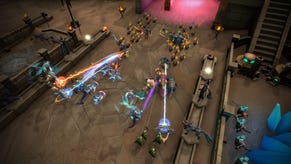Cost of 3DS parts estimated at under £62
Sources say price to retailer is £170.73 per unit
A report by Eurogamer has indicated that the estimated cost of the components of a 3DS to Nintendo is £61.76, with the price to retailers thought to be around £170, a margin of £108.
Once the UK's new 20 per cent rate of VAT is added to that £170.63, minimum break-even price is £204.86. Added retailer overheads and staffing costs soon push that price north of £230.
Eurogamer's estimations come from David Carey, VP of technical intelligence for UBM TechInsights, which specialises in maximum investment return in consumer electronics.
Whilst the estimate is just that, it certainly represents a significant price hike on a console which Nintendo openly admits will be sold at a profit from the get-go.
Compared to the launch prices of Nintendo's other handhelds, the 3DS represents a significant cost increase, but UBM's analysis seems to indicate that the rise is somewhat disproportionate to the costs involved. The DSi, for example, launched at £149 in 2009, but cost just £9.17 less per unit for Nintendo to produce. However, that model came later in a line where previous iterations had absorbed a great deal of R&D costs.
"Little known fact, the margin on hardware for retailers is incredibly small," EEDAR's Jesse Divnich told Eurogamer. "Retailers make the profit on the games and accessories. Typically retailers see a 20 to 25 per cent margin on the games and 40 to 60 per cent on the accessories."
That's a view echoed by Don McCabe, CEO of the independent CHIPS retail network.
"By the time you take into account the VAT and various other bits and pieces, [retailers charging under £200] will not make a brass penny piece. Even for an online outfit, it's still going to cost them money to sell it for under 200 quid."
McCabe sees that as detrimental, not just to the public, but to the industry as a whole.
"It means that consumers won't go hands-on with the machine," McCabe believes. "You don't get hands-on via mail order and supermarkets very rarely do demonstrations.
"What happens is, your early adopters are going to buy the machine come hell or high water. It doesn't matter whether it's £200 or £230, they still would've bought it. But early adopters will not make the machine. It's wave two and wave three that make the machine and the only way that's going to happen is if people see it, feel it, touch it. 3D is very difficult to get across in a TV advert or in a newspaper. People need to experience it.
"We saw it with the Dreamcast. A critically acclaimed machine, but only the early adopters took it on, and it died," he continued.
"For a machine to grow and be viable, it needs to go beyond the early adopters. The actions that the Tescos and the mail order people of this world take have a detrimental effect on that.







